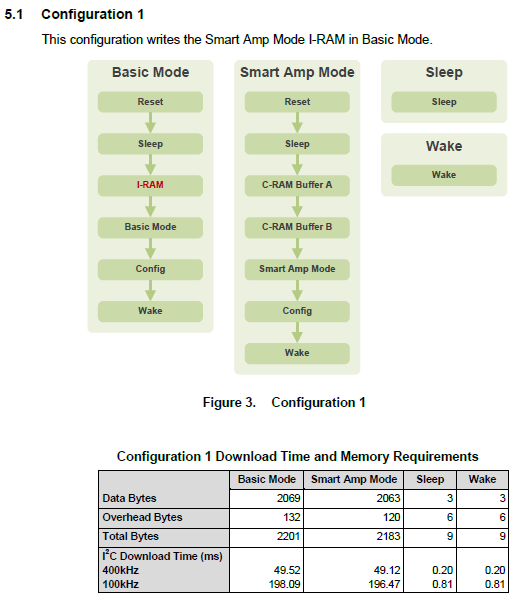Dear all,
I have 2 qestions,especially in TAS5766 register setting,need your support ,thanks~
1.after read TAS576x technique document(TAS576xM 2x50W/4Ω PurePath Smart Amp) ,except
Analog gain can controlled by Ra(to GND) and Rb(to GVDD) ;
DAC gain controlled by Page 1/Register2(HEX 0x2) and Page 1/Register 7(Hex 0x7) ,
Does any actual register exist for volume control ?
2.I got TAS5766 parameter file (TAS5766.h) from Learning Board and PurePath GUI ,
there are almost 4 thousand I2C commands which I need to write to TAS5766,I prepare to send
the 4 thousand I2C commands at system initialize stage ,but I think sending 4 thousand of I2C commands
will take a little of time ;
the 4 thousand commands includes :
page 44 ~ 52
page 62 (Coefficient Memory B)
page 63 ~ 70
page 152 (Instruction Memory)
page 153 ~ 169
page 0
page 1
In order to saving system booting up time,
Does all upper pages I need to program at system initial stage ?


